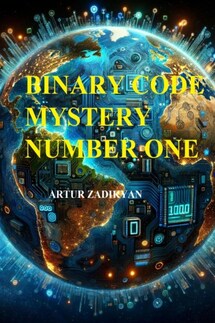Parallel Worlds pro et contra - страница 79
She nodded, and in his manner, without even waiting for an answer, he was already continuing:
– Amita, you have probably already been informed that although you see everyone by sight, you will not recognize their names. So address me as Parmenides. This is the luminary of science of the ancient world, the first person who asserted that the Earth has a spherical shape, and your guide to the world of the unknown, that is me, speaks about what people find it difficult to understand and perceive because of viewing the surrounding reality on the plane that their senses allow them.
Amita, already knowing her interlocutor quite well, smiled.
– Nice to meet you. But can I call you Parmen?
– You can, no question.
Rutra, meanwhile, had gone to the other end of the room and was doing something. Amita at first tried to see through the "sea kingdom" what he was doing, but then, apparently realizing that he was not a guest here, she looked at Parmen and smiled at him again. It was as if he had been waiting for this, determined to enthrall her with a story. Parmen, though, didn't know her level of knowledge, her awareness of the details of the program, her origins, or even her reasons for coming to the center. This in fact no one knew. As a character in the program – Amita was never discussed, though the scientist had little insight into character selection as it was. Knowing Rutra's status, besides being on friendly terms, Parmen waited for an explanation from him. A young person, between 20 and 25 years old, sweet, beautiful, well-mannered, in facial features you can find something in common with peoples from Gibraltar to the Caucasus and further from India to southeast Asia. Acts like she knows Rutra very well, to say the least. Doesn't ask much in the way of questions. He was lost in speculation.
– Amita, tell me, at what speed are we moving through the universe?
– I can't say for sure. It depends on where you look.
– Oh! That gave me an idea.
– I'd love to hear about it. And another thing about the round Earth. Did your namesake argue that before our era?
– Yeah, imagine that.
– So why have we only been using this knowledge since the Middle Ages?
– I'll tell you this: some people still don't know it.
They grinned.
– And I will also say this: we live under the hood and hypnosis of religion, particularly the church. All these great paintings, works and the like, even wars, have become famous and significant, that is, we know them because they were significant for the preaching of the idea of approved power.
– Somehow you've made it very complicated.
– I get that you get it.
They smiled again.
– And about the point… here let's take the original one. You are standing still right now and you don't feel that the Earth is spinning on its axis at a breakneck speed of about 1,700 km/h. However, this is not such a great speed compared to other cosmic speeds. Just like the other planets in the solar system, the Earth revolves around the Sun. In this circular orbit, it moves at a speed of 30 km/s. per second! And in an hour, we travel about 108,000 kilometers this way. But even the Sun doesn't stand still. It with all the stars and planets, yes, with everything, even space dust, moves around the center of the Milky Way galaxy at a speed of about 200-220 km / s, making a complete revolution every 220-250 million years. The Milky Way is pulled towards itself by other galaxies, and everything around it experiences gravitational pull – and consequently, everything twists and turns. To understand who is spinning and how and why, scientists use data from so-called relic radiation, which has been preserved since the big bang. This is because the universe was formed by the big bang 13.8 billion years ago and is still expanding and cooling. This radiation, like a changing picture at a distance, shows what and how it has changed over time. If you look at the Earth from space from afar, for example, you will see that it is round, blue. So there's an atmosphere. Knowing the radiation spectrum of each chemical element, you can tell what it's made of. Yes, yes, each element has its own type of radiation that we can't see. As you get closer, you'll see continents, that is, land and water. When you get even closer, you see mountains, then cliffs, plateaus and elevations, forests. Further you can see the smallest plants and wildlife, and if you conduct research and excavations, then the ancient culture that inhabited this region, as well as the ancient history of flora and fauna, the process of formation of mountains. I hope you understand what I mean?









